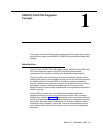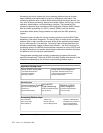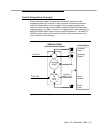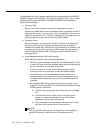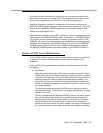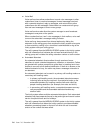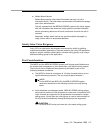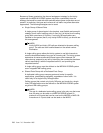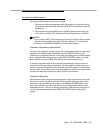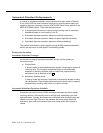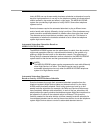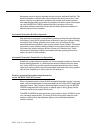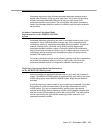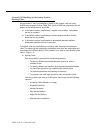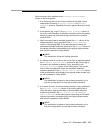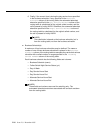
Issue 2.0 December 1995 1-9
Intuity Port Administration
Intuity port administration consists of two steps:
1. Defining the extension associated with a physical port (channel) and the
initial service associated with that port (DNIS_SVC or dedicated Intuity IVR
application)
2. Defining the service associated with a specific called number when the
initial service is DNIS_SVC (dedicated Intuity IVR application or AUDIX)
NOTE:
Do not confuse DNIS_SVC (a specific value used in a field for Intuity system
channel service specification) and DNIS as it relates to T1 trunk service
available on the MERLIN LEGEND Communications System.
Dynamic Allocation or Shared Ports
With dynamic allocation or shared ports, the processing assigned to each call is
based on the Dialed Number Information Service (DNIS) information (call
information) included with the call. In this case, the calling group must be defined
as an
integrated
VMI calling group on the MERLIN LEGEND system, and each
port (channel) must have DNIS_SVC defined as its associated service.
A service assignment table is then defined to associate the called number (or
trunk) with its final processing destination. For each specific called number (or
trunk), an Intuity IVR application name can be specified. At the end of the table,
the entry ANY in the called number field and the service AUDIX are used to send
all calls not otherwise processed to Intuity AUDIX for processing.
Dedicated Allocation
With dedicated ports, the processing assigned to each call is based on the port
(channel) on which the call is received. The Intuity IVR calling groups must be
defined as a
generic
VMI calling group on the MERLIN LEGEND system, and
each port (channel) must have a specific Intuity IVR application defined as its
associated service. There is no service assignment table required, and there is
no call information passed from the MERLIN LEGEND system to the Intuity
system.



